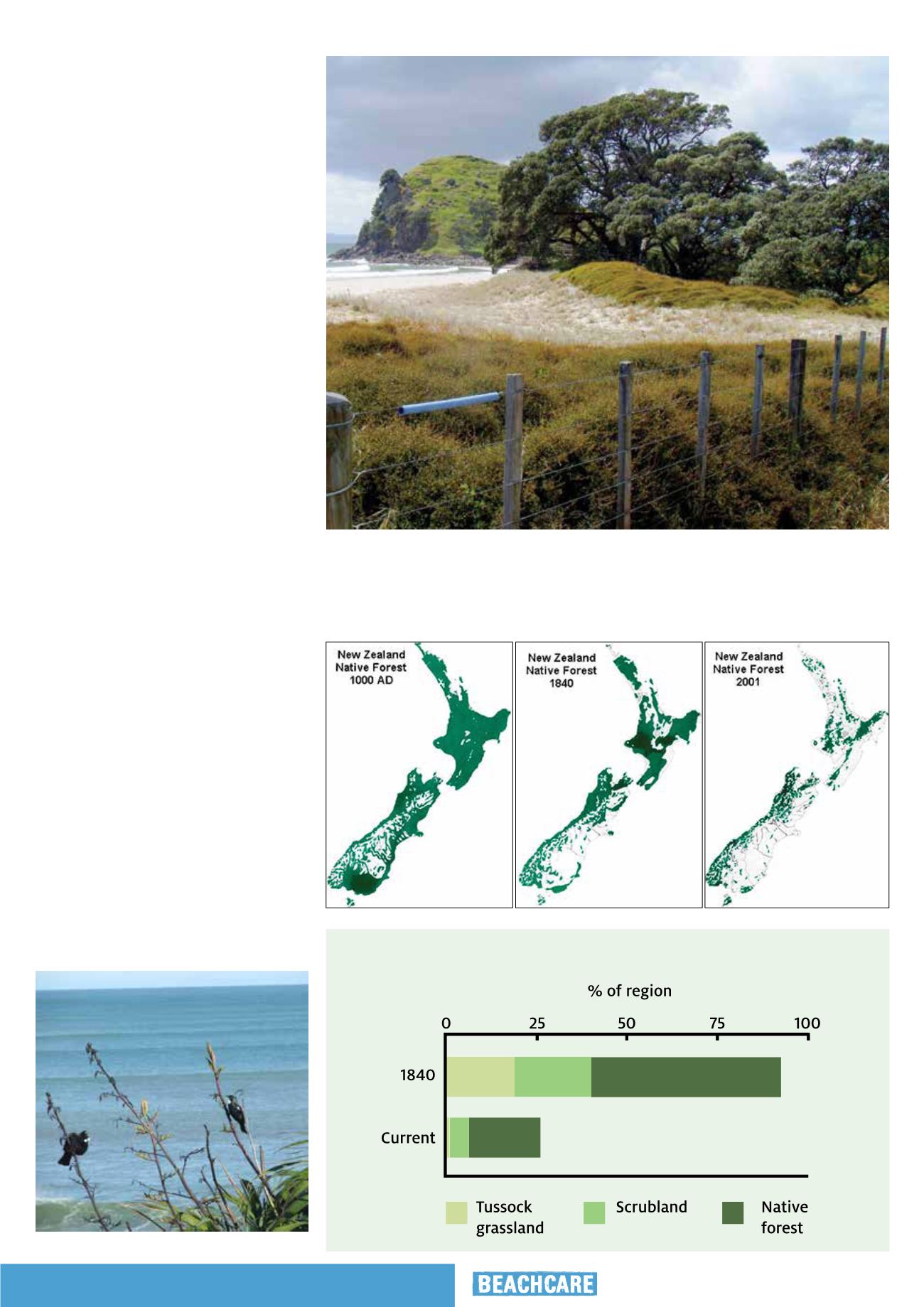
17
Magazine
Coastal forests
In 1840, over 70 per cent of the Waikato’s
coastal bioclimatic zone – roughly the area
within one kilometre of the coast and less
than 300 metres above sea level, was covered
in original forest. Today, less than five per
cent remains, most of this on islands off the
Coromandel Peninsula. Excluding these islands,
original forest now makes up only half a per
cent of the coastal bioclimatic zone. Species
diversity is severely affected once an ecosystem
is reduced to less than 20 per cent of its natural
extent.
Before human settlement many of our coastal
forests would have teemed with seabirds, like
petrels, storm petrels and shearwaters. But
introduced pests such as cats and rats have
destroyed most mainland seabird colonies. Our
coastal forests are still very important for other
native animals. Coastal flax and pōhutukawa
provide nectar for birds (such as tūī and
bellbirds) and lizards (skinks and geckos). Large
trees provide roosts and nesting sites for native
bird species, and streamside plants near the
coast provide spawning areas for native fish.
Loss of vegetation cover:
Prior to human colonisation, it is thought that the
New Zealand land-mass was almost entirely
covered in forest, apart from alpine areas.
Between the beginning of Polynesian settlement
in New Zealand around the 14th Century and the
beginning of organised European colonisation in the
19th Century, it is estimated that forest cover was
reduced by about half, largely through fire. When the
European settlement of New Zealand began in earnest
in the 1840s, it is estimated that forest, or ‘bush’ in
the vernacular, covered about two-thirds of the North
Island and about 25 to 30 per cent of the South Island.
In the decades that followed, bush was destroyed
through milling and fire to make way for settlements
and farms. By 1900, forest cover had been reduced by
half again, to about 25 per cent.
(Images and text courtesy of Kiwi Conservation Club.)
Change in Waikato forest cover
This private beach on the Coromandel Coast still has some aspects of the original dune vegetation
sequence remaining. In this photo, a fore-dune of spinifex is backed by a back-dune zone of pōhuehue
surrounding a remnant of the pōhutukawa forest that would have existed behind the dune.
The landowners have taken steps to protect their dune environment by installing fencing to keep
out stray cattle and to prevent vehicles from being able to access the beach.
Per cent of the Waikato region covered in native forest, scrub and tussock
in 1840 and today.
Tūī feeding on harakeke on the Wh
ā
ingaroa coast.


